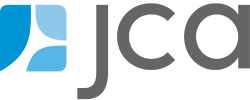5 Ways to Make Systems Training a Part of Your Organizational Success

Shannon Abitbol
Senior Consultant
As a child, there are great benefits to discovering a new toy with no direction or expectations for what to do with it or how to do it. As we grow up, the opportunity to figure things out on our own can also create strength and resilience. When we enter the workforce, however, expectations become more complex. Guidance, support, and training can create confidence, especially in the systems used to collect key organizational data.
Nonprofits have a strong sense of why they exist, what they are trying to solve, and how their mission contributes to their communities and beyond. An important layer of staff buy in is connecting your mission to how system use supports those goals. It’s important to emphasize how training is critical to the success of your mission by guiding staff on use and best practices of the technology. Whether you have a new CRM or a legacy system your organization has used for years—consistency in both regular and ongoing training is an essential part of system success and efficient use. Here are five ways to make systems training a part of your organizational success.
1. Make systems training meaningful.
We’ve all been through boring, out-of-the-box training courses that led us to tune out when the content wasn’t relevant. Maybe the training didn’t feel relevant; maybe the importance and desired takeaways weren’t clear; or maybe the training was simply too long and the point of it was entirely lost.
Training doesn’t have to be a full day of curated content; short, meaningful, directed training opportunities can support learning and growth. Talk to staff and find out what common frustrations exist in your systems, then determine which frustrations stem from a lack of functionality in the system and which stem from a lack of training. Creating a list of impediments may reveal that a system is not meeting organizational needs, or it may instill confidence that the system can offer what you need IF staff are better trained in system functionality.
2. Don’t assume.
Staff who have been with an organization a long time are often assumed to be comfortable with systems. Sometimes, though, the longevity of use creates the most frustration and an increased need for system workarounds to complete necessary tasks. Assuming that long-time staff members are comfortable with a system isn’t a fair assumption. Conversely, new staff may come to an organization with knowledge of your system but may lack the connection of your organization’s best practices or specific processes on system use. Don’t assume a team member’s system knowledge based solely on organizational tenure—you’ll want to assess each user’s ability individually and build your training from there.
3. Create a plan.
Sometimes the first step is the hardest one, and the most intimidating. Workloads and competing priorities can interfere with the need to zoom out and see the big picture, which includes a time-consuming task like creating a training plan. To get the most out of training staff, it is important to create a plan with clear initiatives, goals, and ownership. Leadership must set the tone for the importance of systems use and training and participate with staff too. Each year, there should be a mix of beginner, intermediate, and advanced systems training opportunities for your core platforms.
In your plan, it’s important to create a list of systems values and best practices. Some organizations live by the mantra, “if it is not in the system, it didn’t happen.” Shifting mindset can be a slow process but starting with simple reminders can be a great first step. Revisit your training plan on an annual basis to determine how to continue improving training opportunities each year. Survey staff, formally or informally, to gather feedback about what worked, what didn’t, and what they need in future training sessions.
4. Create systems training guides for key business processes.
Have each department determine critical workflows that are performed most often in their system use and document them. Create short guides, with screenshots and directions, to offer a quick cheat sheet for reminders. Consider creating short training videos for staff by sharing screen navigation and demonstrating workflows, step-by-step. Commit to starting with one or two workflow demonstrations per department and continue to build your training guide library over time. The daunting mindset that all training materials must be created at once can hold you back from starting somewhere. Start slow and build on a toolkit of training over time.
5. Create a group of super users to build system confidence.
Power users can create a longevity of system use and best practices by encouraging others to utilize the system in ways that support the organizational mission and focus. These users help to increase system confidence, improving use by helping to create a positive mindset on how to best use the system. Super users can be most efficient by creating a cross-departmental team that comes together in support of the system, its importance, and confidence that its use supports the mission of the organization.
System success stems from clear expectations, planning, and guidance. While there is great benefit to promoting unstructured discovery to create comfort and familiarity—don’t leave your staff to figure out the technology on their own like a child with a new LEGO set. By providing the proper training, your staff will have the confidence and know-how to effectively utilize the system in support of your organizational goals. And what’s more successful than that?
Do More with Your Data
Ensure every member of your team is confident accessing the full capabilities of your CRM. JCA offers live or recorded training sessions and can help you design an efficient, cost-effective training program for ongoing instruction.

